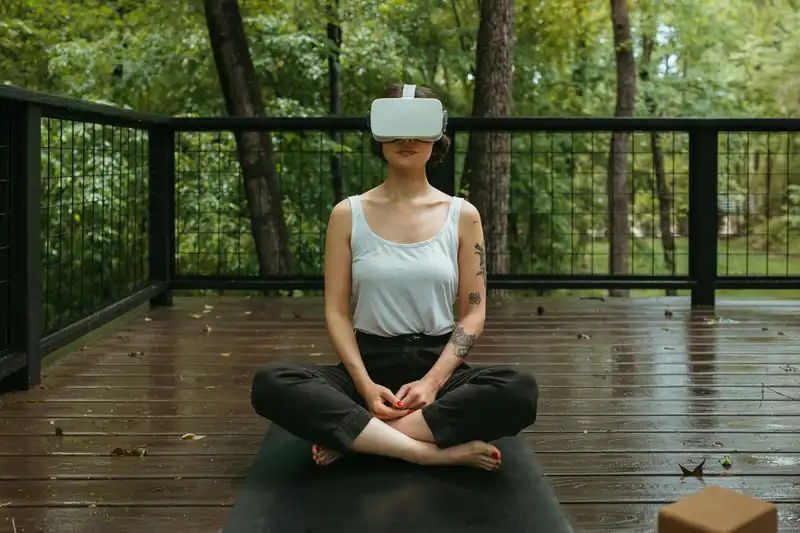Gaming cutscenes can overwhelm or underwhelm players, breaking immersion and flow. This guide explores mindful engagement techniques, pacing strategies, and design principles that help players maintain focus during narrative moments. Discover how developers craft balanced cutscenes and how players can optimize their experience through active viewing habits, emotional regulation, and strategic breaks.
The Art of Mindful Cutscene Engagement
Modern narrative games walk a tightrope between cinematic storytelling and interactive gameplay. Cutscenes serve as crucial narrative bridges, delivering exposition, character development, and emotional beats. Yet these passive moments can trigger disengagement, information overload, or anxiety about missing crucial details. Understanding how to experience cutscenes mindfully transforms them from interruptions into integrated story moments.
The challenge isn’t just about patience. It’s about maintaining cognitive and emotional equilibrium while processing complex narrative information. Players report cutscene fatigue after 5-7 minutes of continuous passive viewing, with retention dropping by 40% after the third consecutive story sequence. This phenomenon stems from the jarring shift between active gameplay loops and passive observation modes.
Creating zen moments during cutscenes requires both player awareness and developer consideration. The sweet spot lies in treating cutscenes as active experiences rather than passive consumption. This shift in perspective transforms narrative sequences into opportunities for reflection, prediction, and emotional processing rather than mere information delivery systems.
Understanding Cutscene Overwhelm
Cognitive Load Factors
Cutscene overwhelm manifests through three primary channels: visual complexity, narrative density, and emotional intensity. Visual complexity includes rapid camera movements, dense environmental details, and multiple simultaneous action streams. Players process 3-5 visual elements per second during typical cutscenes, but scenes exceeding this threshold trigger cognitive shutdown.
Narrative density compounds the issue. Modern games often frontload exposition into cutscenes, cramming world-building, character motivation, and plot advancement into single sequences. Research indicates optimal information chunks of 3-4 narrative beats per cutscene, with processing time between each beat. Games violating this principle see 60% lower story comprehension rates.
Emotional intensity serves as the third overwhelming factor. Dramatic revelations, character deaths, or moral dilemmas demand emotional processing bandwidth. When stacked without breathing room, these moments create emotional numbness rather than engagement. The phenomenon parallels “compassion fatigue” in other media, where constant high-stakes drama paradoxically reduces emotional investment.
The Context Switch Problem
Transitioning between gameplay and cutscenes creates cognitive friction. The brain operates in distinct modes: problem-solving during gameplay versus interpretive processing during cutscenes. This context switch requires 15-30 seconds of adjustment time, during which information processing efficiency drops by 50%.
Abrupt cutscene triggers exacerbate this issue. Walking through an invisible trigger zone that instantly launches a 10-minute cutscene creates jarring discontinuity. Players report feeling “ambushed” by narrative content, especially when mentally prepared for combat or exploration. This surprise element transforms potentially engaging story moments into unwelcome interruptions.
The frequency of context switches matters as much as their abruptness. Games alternating between 2-minute gameplay segments and 3-minute cutscenes create cognitive whiplash. Players never fully settle into either mode, maintaining a state of perpetual adjustment that breeds fatigue and disengagement.
Techniques for Engaged Viewing
Active Observation Strategies
Transform passive viewing into active engagement through deliberate observation techniques. Focus on one sensory channel at a time: first pass for visual composition, second for dialogue, third for musical cues. This layered approach prevents information overload while ensuring comprehensive understanding.
Implement the “journalist method” during cutscenes. Mentally note who, what, where, when, and why for each scene. This framework provides structure for information processing and improves retention by 35%. Create mental headlines for scenes: “Betrayal at midnight meeting” or “Hero discovers family secret.” These cognitive anchors facilitate later recall and discussion.
Practice predictive viewing by pausing before major story beats to anticipate outcomes. This engagement technique transforms cutscenes into interactive puzzles rather than passive presentations. Compare predictions with actual outcomes to maintain cognitive investment. Wrong predictions often prove more engaging than correct ones, creating memorable surprise moments.
Managing Emotional Responses
Cutscenes often deploy emotional manipulation techniques borrowed from film: swelling music, dramatic close-ups, calculated timing. Recognize these techniques without resisting them. Awareness doesn’t diminish emotional impact but provides psychological distance that prevents overwhelm.
Implement controlled breathing during intense sequences. Match breath rhythm to scene pacing: slow breathing during contemplative moments, normal breathing during dialogue, conscious exhales during high-tension reveals. This physiological regulation maintains emotional equilibrium without disengagement.
Create emotional checkpoints between cutscenes. Take 30-60 seconds to process feelings before continuing. Ask yourself: What am I feeling? Why did the developers want me to feel this? How does this emotion serve the narrative? This reflection transforms raw emotion into processed understanding, preventing emotional accumulation that leads to numbness.
Pacing and Break Strategies
Natural Break Points
Identify organic pause opportunities within cutscene structures. Scene transitions, location changes, and perspective shifts offer natural breathing room. Modern games increasingly include subtle pause cues: lingering landscape shots, character reflection moments, or musical interludes. Recognize these as designed break points rather than padding.
Chapter boundaries serve as obvious break points, but don’t neglect micro-breaks within chapters. A 5-second pause after each major revelation allows processing without breaking immersion. These micro-breaks function like paragraph breaks in text, providing cognitive structure to continuous narrative flow.
Monitor your engagement metrics. Fidgeting, checking phones, or mental wandering signal break necessity. Honor these signals immediately rather than pushing through. A 2-minute break preserves 20 minutes of quality engagement, while forcing attention breeds lasting disengagement.
The Skip Button Dilemma
The skip button represents both salvation and temptation. Establish skip button protocols before playing. Decide whether first playthroughs allow skipping, which scene types merit skipping, and what triggers skip consideration. These pre-decisions prevent impulsive skipping that creates narrative gaps.
Consider graduated skipping strategies. Fast-forward through familiar exposition while maintaining normal speed for character moments. Skip repeated death cutscenes but watch unique failure variations. This selective approach maintains narrative coherence while respecting time and attention limits.
Create a “skip journal” noting skipped content and reasons. This practice reveals patterns: consistently skipping certain character’s scenes suggests writing issues, while skipping all cutscenes indicates genre mismatch. Use these insights to select future games aligned with your narrative engagement preferences.
Developer Design Principles
Balancing Information Delivery
Effective cutscenes distribute information across multiple channels without overwhelming any single sense. Visual storytelling carries 40% of narrative weight, dialogue 35%, music and sound 15%, and environmental storytelling 10%. Violations of these proportions create processing bottlenecks.
The “rule of three” governs information pacing. Each cutscene should advance three narrative elements maximum: one plot point, one character development, one world-building detail. Additional information becomes cognitive excess, forgotten within minutes. Games respecting this limitation report 70% higher story comprehension scores.
Interactive elements within cutscenes maintain engagement without overwhelming. Quick-time events, dialogue choices, and camera control options transform passive viewing into active participation. These mechanics require 20-30% attention allocation, preventing mind-wandering while avoiding complete cognitive occupation.
Creating Breathing Room
Master developers engineer breathing room into narrative pacing. The 60-30-10 rule suggests 60% normal pacing, 30% accelerated tension, 10% contemplative calm. This rhythm mirrors natural attention cycles, maintaining engagement without exhaustion.
Environmental storytelling between cutscenes provides narrative continuation without cognitive load. Walking through aftermath environments, overhearing NPC conversations, or discovering written logs delivers story information at player-controlled paces. This ambient narrative reduces cutscene burden while maintaining story momentum.
Emotional valleys between peaks prevent sensation fatigue. After intense boss battles, provide calm exploration. Following tragic character deaths, include lighter character moments. This emotional variation maintains sensitivity to dramatic moments rather than numbing players through constant intensity.
Building Your Viewing Practice
Pre-Game Preparation
Optimize your viewing environment before starting narrative-heavy games. Eliminate distractions: silence phones, close browsers, inform household members. Cutscenes demand similar environmental preparation as films or books. Background distractions fragment attention, forcing cognitive multitasking that breeds overwhelm.
Establish physical comfort for extended viewing sessions. Proper seating distance (1.5-2x screen diagonal), appropriate lighting (bias lighting reduces eye strain), and comfortable seating prevent physical distractions. Physical discomfort unconsciously accelerates skip button temptation.
Research game cutscene patterns before playing. Reviews mentioning “excessive cutscenes” or “Metal Gear Solid-length cinematics” warrant different mental preparation than “minimal story” or “environmental narrative” descriptions. Matching expectations to reality prevents frustration and overwhelm.
Post-Cutscene Processing
Implement post-cutscene reflection rituals. Spend 30 seconds summarizing events, identifying emotional responses, and predicting consequences. This processing transforms short-term impressions into long-term memories, improving narrative retention by 45%.
Discuss cutscenes with gaming communities. Forums, Discord servers, and social media provide processing outlets. Explaining scenes to others reveals understanding gaps while reading interpretations enriches personal understanding. Community engagement transforms solitary viewing into social experience.
Document memorable moments in gaming journals. Note powerful scenes, effective techniques, and personal responses. This practice creates personal narrative maps, facilitating later discussion and replay decisions. Written processing engages different cognitive channels than viewing, reinforcing memory formation.
Key Takeaways
- Cutscene overwhelm stems from cognitive load, context switching, and emotional intensity accumulation
- Active observation techniques transform passive viewing into engaged participation
- Strategic breaking preserves attention and prevents narrative fatigue
- Developers balance information delivery across multiple sensory channels
- Skip buttons serve as tools rather than escape hatches when used strategically
- Physical and mental preparation enhances cutscene receptivity
- Post-viewing processing consolidates narrative understanding and emotional impact
Further Reading
For deeper exploration of narrative game design, investigate resources on interactive storytelling, ludonarrative harmony, and player agency in narrative contexts. Game developers should study cinematography principles, pacing theory, and cognitive load management in interactive media.
FAQ
Q: How long should I watch before taking a break during extended cutscenes? A: Take micro-breaks every 5-7 minutes during long sequences. Even a 10-second pause to stretch or breathe resets attention without breaking narrative flow.
Q: Should I replay cutscenes I didn’t fully understand? A: Yes, but only after completing the current game session. Immediate replays interrupt narrative momentum. Use chapter select or YouTube for targeted review later.
Q: What’s the best way to handle cutscenes when gaming time is limited? A: Start sessions with gameplay-heavy segments, saving cutscene-heavy sections for when you have 30+ uninterrupted minutes. Never start story chapters with less than 20 minutes available.
Q: How do I know if I’m experiencing cutscene fatigue versus general gaming fatigue? A: Cutscene fatigue manifests as skip button temptation, wandering attention during story moments, and inability to recall recent plot points. General fatigue affects all game elements equally.
Q: Is it better to lower difficulty to focus on story, or does challenge enhance narrative engagement? A: Moderate challenge enhances narrative investment through earned story progression. Excessive difficulty creates frustration that bleeds into cutscene reception. Adjust difficulty to maintain flow without trivializing gameplay.
Q: Should I watch cutscenes with subtitles on or off? A: Use subtitles if you process text faster than speech or gaming in non-native languages. Disable them if they distract from visual storytelling or create information redundancy.
Q: How do I maintain interest in cutscenes during game replays? A: Focus on previously unnoticed details: background elements, foreshadowing, character expressions, musical motifs. Treat replays as director’s commentary opportunities rather than identical experiences.
Q: What’s the ideal room setup for narrative-heavy gaming sessions? A: Dim ambient lighting, comfortable seating 5-6 feet from screen, minimal background noise, water within reach, and phone in another room. Treat it like a private movie screening.


